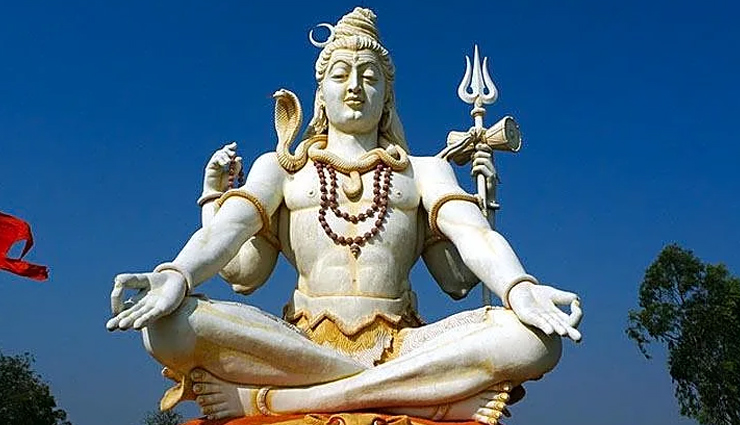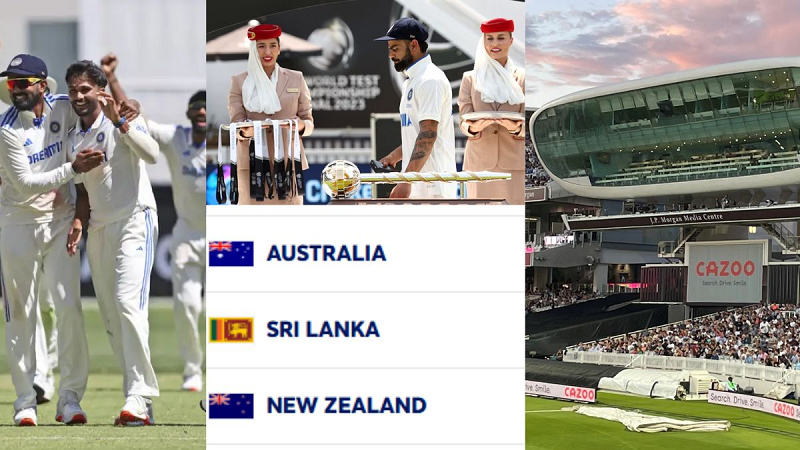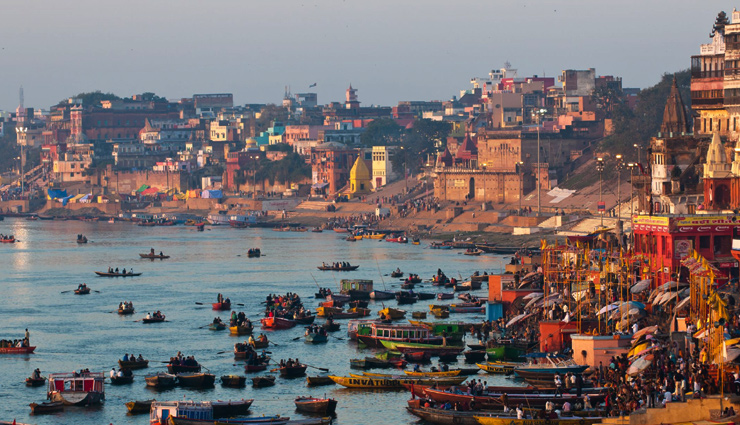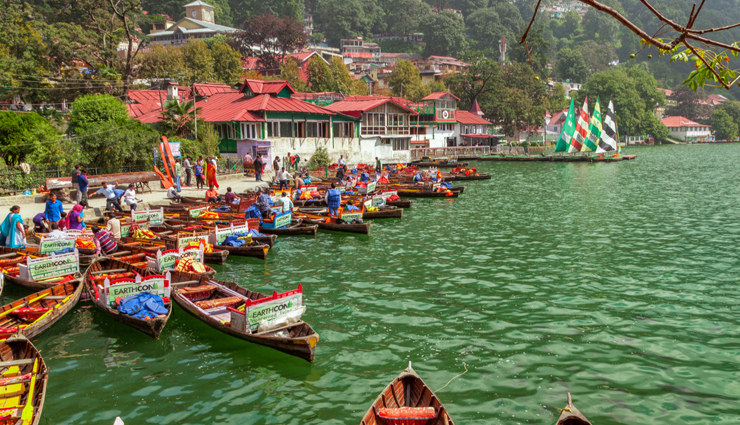Pushkar, the city of temples, is considered very important from the point of view of tourism, which is one of the biggest pilgrimage sites of the Hindu religion. According to Hindu beliefs, one gets freedom from all kinds of sins by taking a bath in Pushkar Lake located in Pushkar. Pushkar is surrounded by the Aravalli mountain range where the weather is very pleasant. The only temple of Lord Brahma in the country is also here. Today we are going to give you information about some of the holy places here that have great religious importance also. If you are going to visit Pushkar then definitely visit these places.

Pushkar Lake
Pushkar Lake, located in Pushkar, one of the largest pilgrimage sites and biggest tourist destinations of Rajasthan, is believed to have been described before the 4th century BC. Description of Pushkar Lake is also found in the inscriptions of Sanchi and this ancient pilgrimage site has been mentioned by Buddhist monks and Chinese traveler Fa Jian in their travelogues. Pushkar Lake has been revered as a sacred pilgrimage site for Hindu religious followers since it came into existence. There are about 500 ancient and new temples built around Pushkar Lake, now it depends on you how many of these temples you can see. There are a total of 52 ghats built on the lake, all these ghats have their own religious and mythological significance. One must take time for Gwalior Ghat, Gangur Ghat, Yag Ghat, Dadhich Ghat, Jaipur Ghat, Varaha Ghat, Karni Ghat, Kota Ghat, Govind Ghat, Saptarshi Ghat and Gau Ghat built on Pushkar Lake.
Bramha Temple Pushkar
There are more than 500 new and ancient temples built in Pushkar. Among all these temples, the Brahma temple located here is the most ancient and important. Marble and stone were used in the construction of the Brahma Temple built in the 14th century. The idol of Lord Brahma along with his second wife Goddess Gayatri is also installed inside the temple. Even today, the Brahma temple located in Pushkar is the oldest in the whole world, although there are temples dedicated to Lord Brahma in the countries around India too. Mughal invader Aurangzeb had destroyed almost all the ancient temples built in Pushkar, in which the Brahma temple was also badly damaged.
Varaha Temple
Varaha Temple, dedicated to the third incarnation of Lord Vishnu, is one of the oldest temples located in Pushkar. Varaha Temple, built in the 12th century, was built by the then Rajput ruler Maharaja Anaji Chauhan. The original temple structure was demolished by the Mughal invader Aurangzeb in 1727, after which the then-king of Jaipur Sawaiman Singh got the Varaha temple rebuilt. A large idol of the Varaha avatar of Lord Vishnu has been installed in the sanctum sanctorum of the Varaha temple. Apart from this, other incarnations of Lord Vishnu are also depicted in the temple with very beautiful handworkmanship.
Savitri Temple
The Jewel of the Aravali mountain range in Pushkar Savitri Devi Temple situated on Giri Hill is dedicated to Goddess Savitri, the first wife of Lord Brahma. Along with Goddess Savitri, the idol of Goddess Gayatri is also present in the Savitri Devi temple. Goddess Savitri is worshiped first in the temple and then Goddess Gayatri is worshipped. Very picturesque views of Pushkar City and Pushkar Lake can be seen from the temple. Watching sunrise and sunset from Savitri Devi temple provides a completely different experience. Due to the temple being situated on Ratnagiri Hill, you will have to climb 200 stairs to reach here, which will cause a lot of fatigue.
Gayatri Temple
Gayatri Devi Temple, located on the outskirts of Pushkar city, is dedicated to Gayatri Devi, the second wife of Lord Brahma. Apart from Gayatri Temple, this temple is more famous by the name of Paap Mochini Temple. To reach the temple one has to climb a hill. God and Savitri Devi are worshiped along with Gayatri Devi in Gayatri Devi temple. According to the legend, when Lord Brahma was performing Yagya at Pushkar Lake, due to the delay in the arrival of his first wife Savitri Devi, he married Gayatri Devi for the second time so that the Yagya could be started at an auspicious time. Gayatri Devi was born in the form of a human being, so to make her a deity, she was put into the mouth of a cow and taken out from behind. This process was repeated three times. In this way, Gayatri Devi was transformed from a human being to a deity. Gayatri Devi Temple was built on a small hill located near Pushkar.
Rangji Temple Pushkar
Built-in South Indian architectural style and Rajput architecture, Rangji Temple looks completely different from all the ancient temples built in Pushkar. Seth Puran Mal Ganiwal, a resident of Hyderabad, built the Rangji temple in 1823. This temple is dedicated to Lord Rangji, who is considered an incarnation of Lord Vishnu. Every year thousands of devotees from different corners of the country come to the temple of Lord Rangji located in Pushkar to have darshan of Lord Rangji. Apart from Lord Rangji, idols of Lord Krishna, Goddess Lakshmi, and Sri Ramanujacharya have also been installed in the temple. The architecture of Rangji temple is completely different from other temples of North India.

Attapateshwar Mahadev Temple Pushkar
Attapeshwar Mahadev Temple dedicated to Lord Shiva is a Shiva temple built around the 12th century. The religious importance of Attapeshwar Mahadev Temple is equal to that of the most prominent Brahma Temple of Pushkar. Attapeshwar Mahadev Temple is constructed using the ancient architectural style Hemadpanthi style. The fine workmanship done on the stones at the time of construction of the temple still looks alive. The idol of Lord Shiva installed in the temple has five faces which are called Sadyojat, Aghor, Vamdev, Ishaan, and Tatpurush. The four faces of the idol point in four directions and the fifth face points toward the sky, purity, and spirituality.
Budha Pushkar Lake
Apart from Pushkar Lake, there is Another ancient lake remains which is known as Budha Pushkar Lake. The importance of Budha Pushkar Lake is equal to that of Pushkar Lake. According to the legend, Lord Rama returned to Ayodhya after completing 14 years of exile and then traveled to Budha Pushkar Lake to immerse the ashes of his father King Dasharatha.
Gurudwara Sahib Pushkar
Apart from the Hindu community, Pushkar is also a revered place for the people belonging to the Sikh community. Every year thousands of people belonging to Sikh and Hindu religions come to pay obeisance at Gurdwara Sahib located in Pushkar. Gurdwara Sahib is a Gurudwara dedicated to the 10th Sikh Guru, Sri Guru Gobind Singh Ji. After the war with Aurangzeb, Shri Guru Gobind Singh Ji had to leave Anandpur. After leaving Andanpur, Shri Guru Gobind Singh Ji also spent some time in Pushkar. During his stay in Pushkar, Shri Guru Gobind Singh Ji recited Guru Granth Sahib sitting on the banks of Pushkar Lake. After the Mughal Empire ended, the Maratha rulers built the Gurdwara Sahib Sikh temple in Pushkar. A copy of the handwritten Sikh scripture is also preserved in Gurdwara Sahib. It is believed that this handwritten copy was written by Shri Guru Gobind Singh Ji himself.
(PC: Lifeberrys)










